In the South of the country, Puglia is a region renowned for it’s wonderful cuisine, magnificent coastline and exuberant architecture. Because of it’s mild Winter climate, it’s also a great area of Italy to visit whatever the time of year. With nearly 800 kilometres of coastline, it can boast the longest coastline of any mainland region in Italy and is subsequently a much larger region than many people realise. Because of it’s size Puglia is also a region with much variety, stretching from the foothills of the Appenines in the North to the rolling hills and plains of the Valle d’Itria and all the way down to Santa Maria di Leuca at the southernmost tip. Here is our guide on the top things to see and do during your visit to Puglia.
1. Ostuni: Known as ‘La Citta Bianca’ due to its uniformly dazzling white buildings and rising up above the flatter landscape surrounding it, Ostuni must be one of the most stunning cities in this area of Italy.
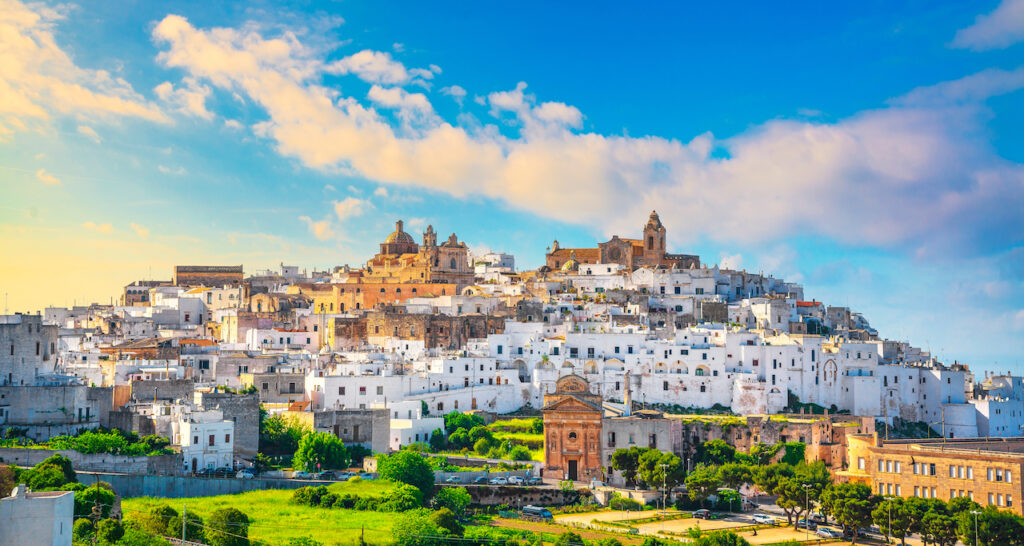
Founded 600 years before the birth of Christ, the city is rich in history and is now a charming maze of narrow streets, stairs and alleyways, leading at the summit to the 15th century Concattedrale. The views from all around the city are stunning and it’s worth a visit there just to enjoy the 360 degree vistas of the surrounding countryside and coastline.
2. The trulli of Alberobello: Most people are familiar with the remarkable trulli that characterise this region of Italy but only in Alberobello have the trulli edged from the countryside into the town.
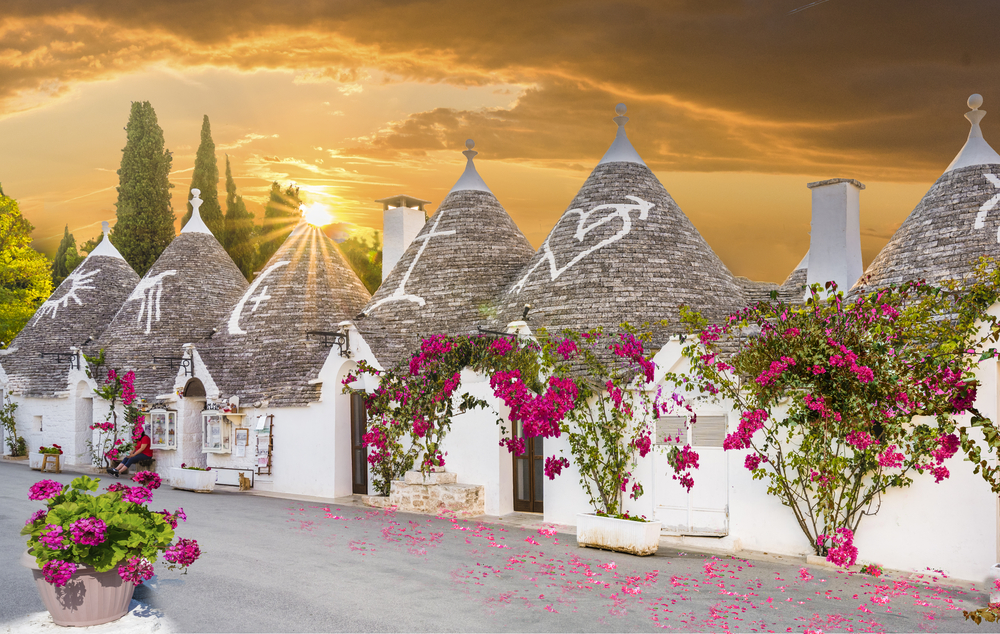
Here you will find whole streets of trulli, rising up in neat terraces. The site is a UNESCO heritage site and popular with tourists and should not be missed!
3. The National Park of Gargano was created in 1991 and this long stretch of coastline is stunning, dotted with hidden coves, dramatic cliffs, pretty fishing villages and ancient forests. Some of the most popular towns along this strip include Rodie Garganico, Vieste, Peschici and Manfredonia.
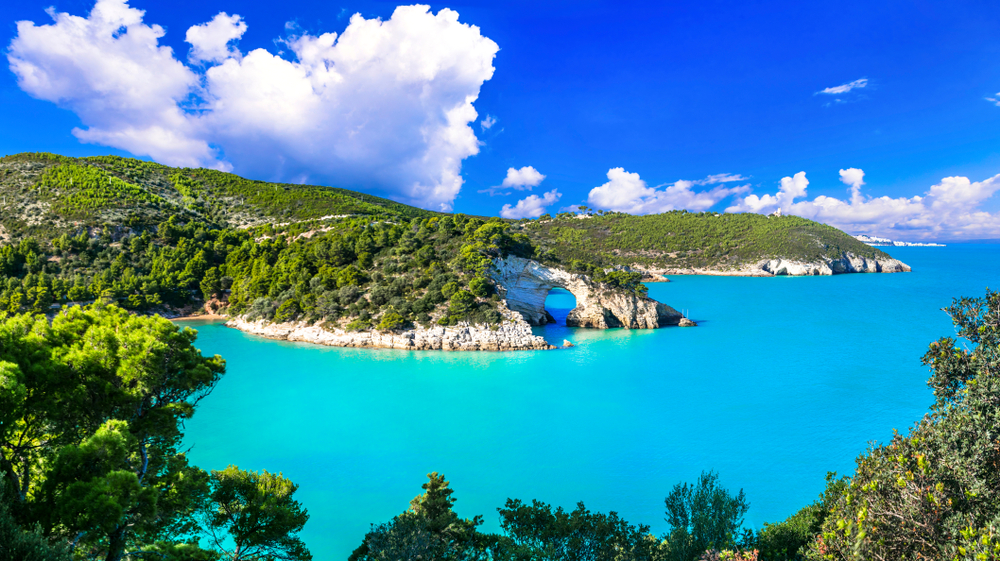
4. The beaches! Visitors to Puglia are spoilt for choice when it comes to beautiful beaches. The coastline near Ostuni boasts some of the very best sandy beaches, winning 5 Blue Flag awards in recent years. It’s also where you have the chance to spot flamingoes, just one of the migratory species that are spotted in the area. And don’t forget that just off the coast, it’s also common to see dolphins swimming in the sea. However, there are plenty of beaches further South, one of our favourites being the Punta della Suina and plenty further North too, including Bari, Monopoli and Polignano a Mare. The latter was actually where singer and songwriter Domenico Mudogno was inspired to write ‘Volare’.
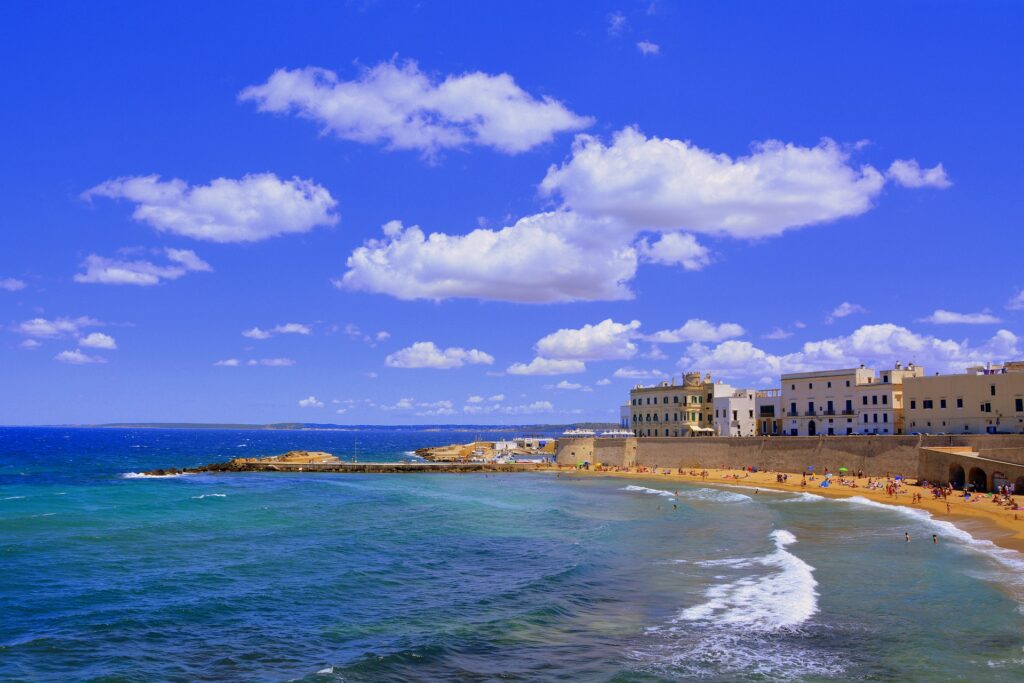
5. Bari is often known as the gateway of Puglia and is popular with holidaymakers. It’s definitely worth a trip to the old town – ‘Bari Vecchia’. It’s narrow streets are teeming with life and it’s not unusual to see Italian life literally spilling out on to the streets as women sit at tables making the typical pasta of the region – ‘orechiette.’ It’s extremely easy to get lost in the maze of narrow passageways here but don’t worry…. if you think you’re lost, just look down. The black stone pavement was laid to help visiting merchants navigate their way out of the town whilst the white limestone paving will take you deeper into the town. And while in Bari, don’t miss the opportunity to visit the Basilica di San Nicola, one of Puglia’s famous Norman churches.
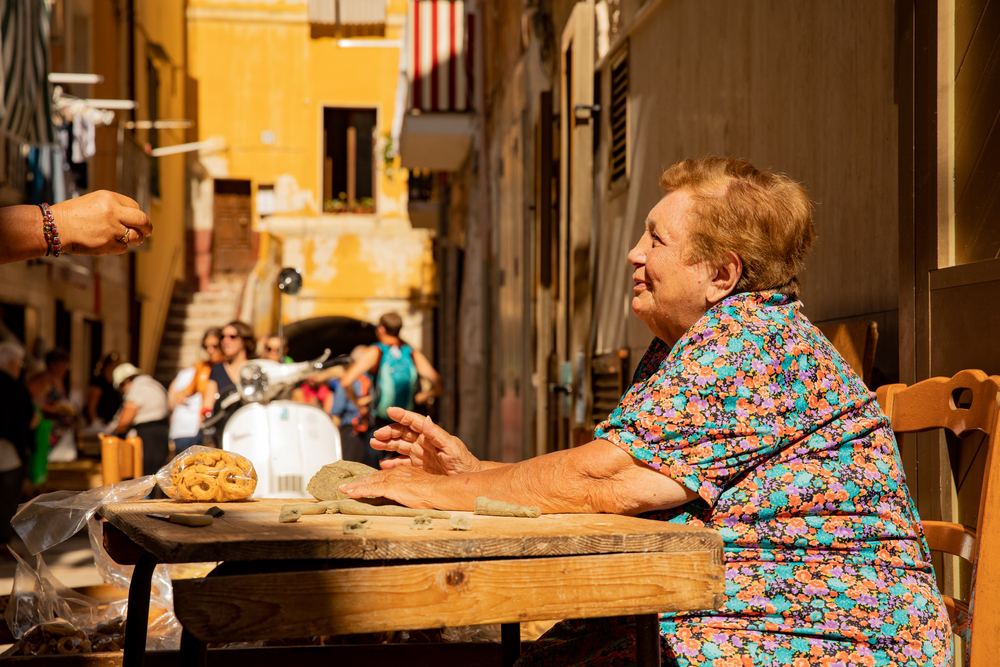
6. Otranto is home to a Norman Cathedral – Duomo – which boasts a 12th century mosaic floor depicting the tree of life as well as housing the bones of the 800 matryrs who resisted the Turkish invasion and refused to convert to Islam. These skulls stare out at you through the glass walls and are not for the faint hearted!
7. Lecce is the main city within the Salentine peninsula within the heel of Southern Italy. Famous for it’s exhuberant architecture, much in the Baroque style, it is crammed full of churches and palazzi. However, it’s history extends beyond the Baroque era and visitors are also treated to a wonderful example of a Roman amphitheatre almost perfectly preserved.
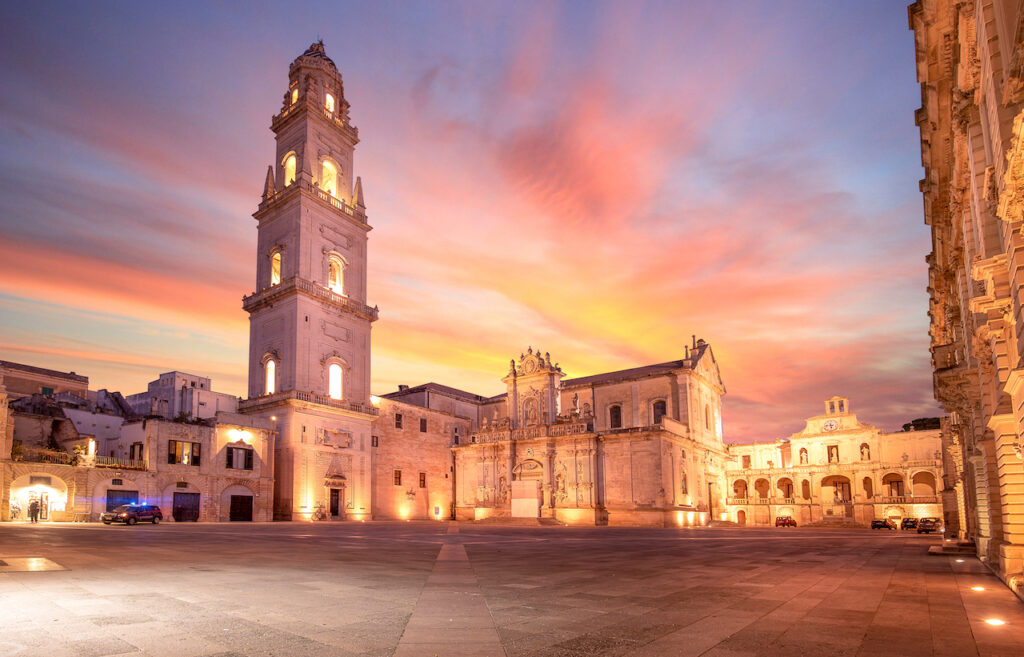
8. Galatina should definitely be visited, if possible, on 29 June. On this day, you will get to enjoy the spectacle of the St Peter and Paul street festival and the ritual of tarantism. Italy’s lively dance, the Tarantella, grew out of tarantism, the hysteria that was prevelent in the 15th to 17th centuries. Superstition had it that victims of the tarantula spider’s bite could supposedly cure themselves by sweating out the poison through frenzied dancing.
9. Underground oil presses in Gallipoli. At the Frantoio Ipogeo in the Granafei Palance, visitors can explore one of the 35 underground olive presses first used in 1600 to make olive oil for lamps. Working conditions were pretty miserable and a trip to the site will certainly give you a feel for what it was like to work in these damp and dark surroundings.
10. Locorotondo is an extremely pretty little town, whose residents ensure that it is immaculately kept, filling it’s window boxes and alleyways with an abundance of geraniums.
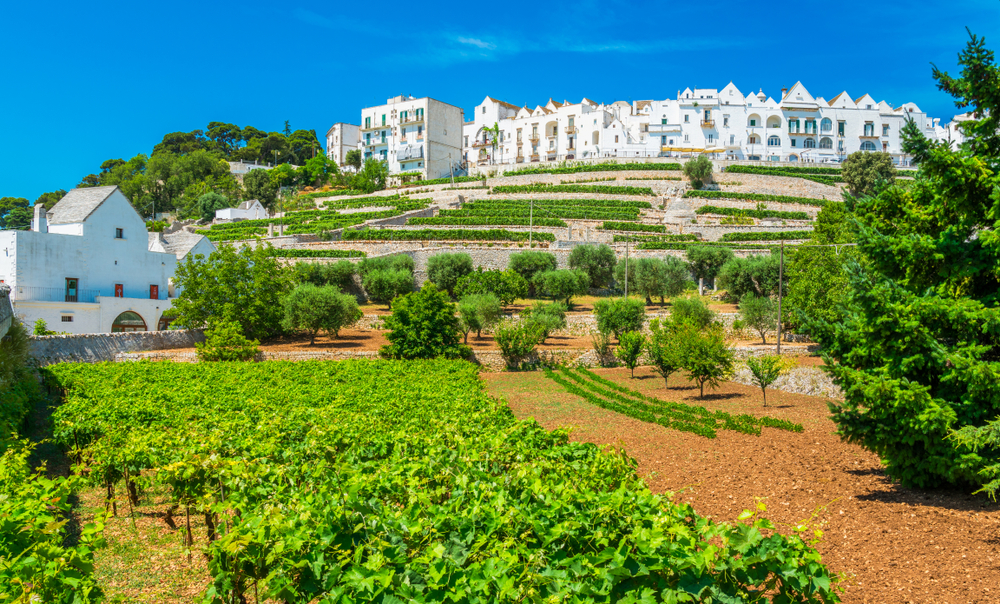
11. Gravina and the Alta Murgia national Park. The latter is a protected plateau boasting a superb array of flora and fauna and is a must-see for nature lovers whilst Gravina is a crumbling Medieval town at it’s centre.
12. The next ‘must see’ site is actually not on Puglia’s extensive mainland but actually sits under the waters of it’s coastline. Clamber over the dunes just beyond Torre Rinalda on the road from Casalabate to San Cataldo, and sitting just 50 metres offshore lies a shipwreck. The ship was sunk by the British navy in 1941 and it’s so near to the shoreline that you can literally just take a deep breath and dive down to explore the wreckage.
13. The butchers in the village of Cisternino are open well into the evening. Take a visit to the village, select your meat from their fridges and they will cook it for you right there and then, serving it with chips, salad and wine. Simple food but it doesn’t get much better!
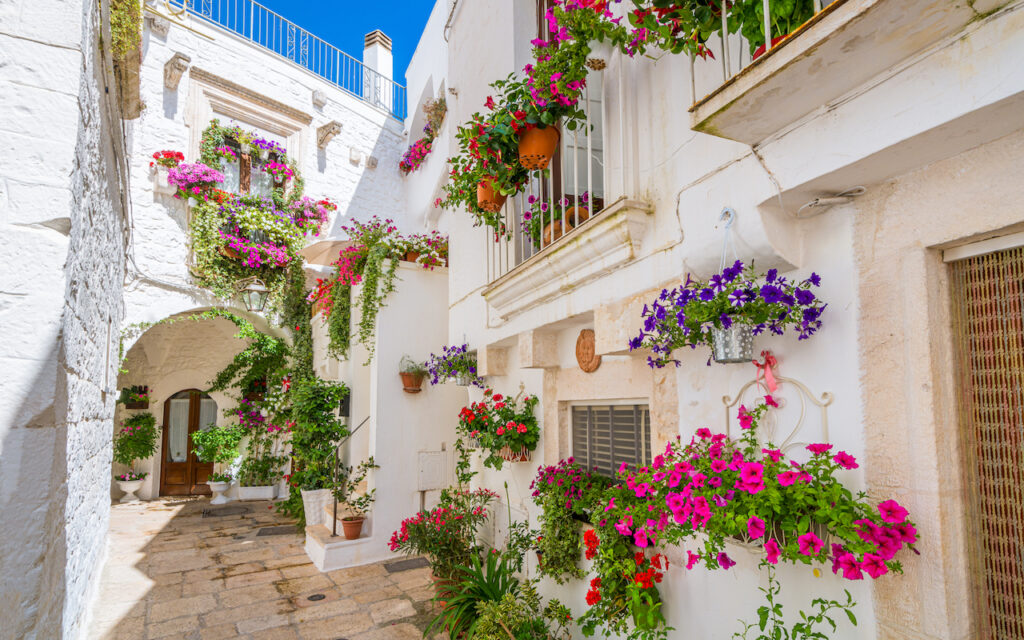
14. The underground caves of Castellana are a spectacular subterranean world. Situated 40km South East of Bari, they are Italy’s longest subterranean network and are an extensive network of galleries full of formations of stalegnites and stalagmites, the most impressive being the Grotto Bianca (White Grotto).
15. In the reign of the Holy Roman Emperor Frederick II, a number of castles were built or repaired to defend the Kingdom of Sicily from its many enemies. The Castel del Monte is arguably the most impressive of these but, in fact, was one of the few not constructed to defend anything! It is an octagonal-shaped castle with sizteen halls set over two levels.
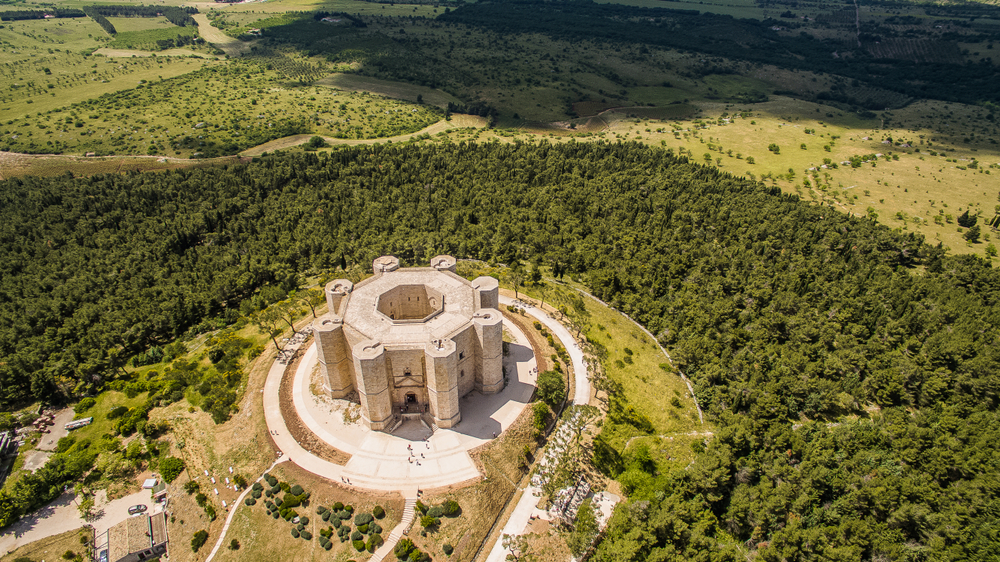
Wherever you end up visiting, probably some of the best advice we could give would also be to not only visit some of these more well known locations, but also take the time to head off the beaten track. Find those truly ‘authentic’ places that other tourists haven’t yet found and make the most of the incredible culinary traditions of the region, including it’s impressive history of wine production. For a great selection of villas in Puglia please take a look at the Bookings For You site.
